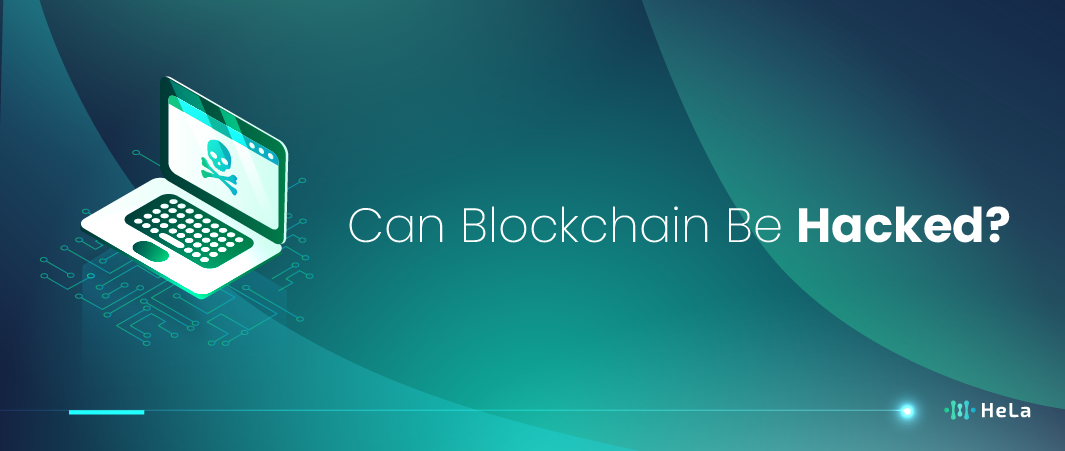Blockchain technology is often lauded for its security and immutability. At its core, a blockchain is a distributed ledger that records transactions across multiple computers, so that the record cannot be altered retroactively without altering all subsequent blocks and the consensus of the network. However, despite these features, questions remain about its invulnerability to cyber-attacks. This article delves into the possible vulnerabilities within blockchain technology, assessing whether it can truly be hacked and under what circumstances.
Understanding blockchain’s architecture is crucial to recognizing its potential weaknesses. Typically, a blockchain is designed to be decentralized and secured by cryptographic principles, which protect the integrity of data blocks. As each transaction occurs, it is broadcasted to a network of nodes that validate the transaction before it is added to a block. Once added, this information is nearly impossible to change. Yet, no system is entirely secure, and blockchain is no exception.
The rising popularity and significant value associated with blockchain networks make them attractive targets for hackers. Although hacking a blockchain is challenging, it is not impossible. Several incidents have highlighted vulnerabilities that could potentially be exploited. This article explores these vulnerabilities, providing a clear picture of blockchain’s security landscape.
The Nature of Blockchain Vulnerabilities

Blockchain technology, widely recognized for its pivotal role in powering cryptocurrencies like Bitcoin and Ethereum, has been lauded for its robust security features. These features include decentralized processing, cryptographic techniques, and immutable records that collectively enhance the integrity and transparency of transactions. However, despite its strengths, blockchain is not impervious to vulnerabilities.
The vulnerabilities in blockchain often stem from various sources, including smart contract flaws, network security issues, and human errors in code implementation. Smart contracts, especially, can contain exploitable bugs due to their immutable nature once deployed, making any flaw permanent and potentially disastrous. Moreover, blockchain networks can suffer from 51% attacks, where a single entity gains control of the majority of the network’s mining power, compromising its decentralization and security.
Understanding these vulnerabilities is crucial for developers, users, and organizations involved in blockchain technologies. It is essential to continuously evaluate and address these vulnerabilities to safeguard against potential security breaches that can lead to significant financial and reputational damages. This section aims to delve deeper into the specific types of vulnerabilities, their implications, and strategies for mitigation.
Common Types of Blockchain Attacks

Blockchain technology, widely recognized for its security features like decentralization and cryptographic hashing, still faces several types of security threats. Below, we delve deeper into some of the most common types of attacks on blockchain networks, shedding light on potential vulnerabilities:
51% Attacks
This type of attack poses a significant risk in blockchain networks, particularly those using proof-of-work (PoW) consensus mechanisms. If an attacker or a group of colluding attackers manage to control more than 50% of the network’s mining power, they can alter the blockchain’s history and double-spend coins. Such control not only allows them to prevent new transactions from gaining confirmations but also enables them to reverse transactions that were previously confirmed while they were in control, leading to potential fraud and loss of trust in the blockchain’s security.
Sybil Attacks
In a Sybil attack, an attacker floods the network with a multitude of fake identities. Without a robust authentication mechanism, these false nodes can be used to gain disproportionate influence over network operations, such as affecting voting systems or consensus processes. The primary defense against Sybil attacks involves mechanisms like proof-of-stake (PoS) or proof-of-work (PoW), which require node validation efforts that cannot be easily faked by attackers.
Routing Attacks
These attacks exploit the way information travels across the internet and can be particularly difficult to detect and mitigate. By manipulating the routing protocols, attackers can intercept or redirect data exchanged between nodes on the blockchain network. This can lead to private data leakage, delayed block propagation, or even double spending. Ensuring the security of the routing infrastructure and using encryption can help mitigate the risks associated with routing attacks.
Smart Contract Vulnerabilities
Smart contracts automatically execute transactions based on predefined rules and conditions within blockchain networks. However, they are only as secure as the code they are written with. Bugs or logical errors in the smart contract code can be exploited to trigger unintended actions, drain funds, or lock out funds permanently. Regular audits by experienced developers and the use of formal verification tools are critical in identifying and fixing vulnerabilities before malicious actors can exploit them.
Phishing Attacks
Phishing is a common social engineering technique used outside of blockchain but is particularly detrimental within the blockchain ecosystem due to the irreversible nature of blockchain transactions. Attackers often create fake websites or send misleading emails mimicking legitimate blockchain services to steal users’ credentials and private keys. Educating users about security practices and implementing multi-factor authentication can reduce the risk of such attacks.
Understanding and addressing these attacks are essential for enhancing the security of blockchain technologies and for ensuring the trust and safety of its users.
Real-World Examples of Blockchain Hacks

Blockchain technology is often praised for its robust security features, primarily due to its decentralized nature and cryptographic algorithms. However, it is not immune to attacks and has been the target of several high-profile hacks. Here are some notable real-world examples that highlight the vulnerabilities exploited by hackers:
- The DAO Attack (2016) – One of the most infamous blockchain breaches involved the Decentralized Autonomous Organization (DAO), a venture capital fund built on Ethereum. Hackers exploited a flaw in its smart contract code to siphon off approximately $50 million worth of Ether. This hack had significant repercussions, leading to a hard fork in the Ethereum blockchain to recover the funds.
- Mt. Gox Meltdown (2014) – Mt. Gox, once the largest Bitcoin exchange, faced a massive hack where about 850,000 bitcoins were stolen, valued at approximately $450 million at the time. This breach was a result of both system flaws and operational issues, causing a major blow to the credibility of cryptocurrencies at the time.
- Parity Wallet Freeze (2017) – Due to a vulnerability in the Parity wallet’s multi-signature function, users found their funds permanently frozen. An accidental deletion of a critical library by a user triggered the freeze, affecting more than $280 million in Ether. This incident showcased the risks associated with code errors in blockchain applications.
- Bitfinex Hack (2016) – The Bitfinex exchange suffered a security breach where hackers stole nearly 120,000 bitcoins, valued at roughly $72 million at the time. The attackers exploited a vulnerability in the exchange’s multi-signature wallets.
- Coincheck Theft (2018) – In what is considered the largest cryptocurrency theft in history, hackers infiltrated the Coincheck exchange and illegally transferred out NEM coins worth approximately $534 million. The breach was primarily attributed to lax security measures, including the absence of multi-signature security and cold wallets.
These examples demonstrate that despite its advanced security capabilities, blockchain technology can still be compromised through various means such as code flaws, operational oversights, and sophisticated cyber-attacks. These incidents serve as important reminders for ongoing security assessments and the implementation of best practices in blockchain development and operations.
Enhancing Blockchain Security Measures
Enhancing blockchain security measures involves several key strategies that address the inherent vulnerabilities of this technology. Given that blockchain operates on a decentralized system where transactions and data are recorded on multiple computers simultaneously, ensuring the integrity and security of these systems is paramount.
Cryptographic Techniques
Cryptography is the cornerstone of blockchain security, ensuring data is transmitted securely and new blocks are validated reliably. Enhancements in this area might include adopting advanced cryptographic algorithms that offer stronger resistance against quantum computing threats. Additionally, improving the management and storage of cryptographic keys—through hardware security modules or multi-signature technologies—can significantly mitigate the risk of unauthorized access.
Consensus Protocols
Consensus protocols are vital for verifying transactions and maintaining the integrity of the blockchain without a centralized authority. Enhancing these protocols could involve integrating more energy-efficient mechanisms, such as Proof of Stake (PoS), which also offers lower susceptibility to centralization compared to Proof of Work (PoW). Newer models like Proof of Authority (PoA) and Proof of Elapsed Time (PoET) can also be considered, which might offer better performance and security under certain conditions.
Network Security
Given that blockchains operate over computer networks, protecting these networks is crucial to prevent attacks like Distributed Denial of Service (DDoS), which could cripple network functionality. Enhancing network security can include more robust monitoring systems that use artificial intelligence to detect unusual patterns signaling potential attacks. Implementing comprehensive firewalls and intrusion detection systems can also bolster defenses against network-based threats.
Regular Audits
Conducting regular audits of blockchain protocols, smart contracts, and other associated applications is essential for identifying and addressing security vulnerabilities. These audits should be thorough and conducted by experts who can scrutinize the code for flaws and suggest improvements. External audits by third-party firms can provide an unbiased review, while continuous internal audits can quickly catch and mitigate emergent issues.
Decentralization
A higher degree of decentralization typically equates to increased security in blockchain networks. By distributing data across a wider array of nodes, it becomes substantially harder for any single entity to gain control or manipulate the system. Efforts to enhance decentralization might include encouraging a more geographically and administratively diverse node distribution, which can help protect against coordinated attacks on specific regions or organizations.
Education and Training
Educating developers about best practices in blockchain development and informing users about safe interaction protocols can greatly reduce security risks. Training initiatives can focus on secure coding practices, understanding blockchain architectures, and recognizing phishing and other common cyber threats. For users, knowledge about wallet security, the importance of private key management, and the risks of interacting with unknown smart contracts can be crucial for safe blockchain engagement.
By deepening the focus on these areas, the security of blockchain technology can be significantly improved, ensuring its viability and reliability as a transformative technological foundation across various industries.
Also Read: Top 10 Web3 Crypto Projects to Check this 2024
The Future of Blockchain Security
As blockchain technology continues to evolve, so does the landscape of security challenges and solutions. Future advancements are expected to address current vulnerabilities, such as those related to scalability, privacy, and decentralized operations. Experts in the field are exploring innovative cryptographic methods like zero-knowledge proofs, secure multi-party computation, and quantum-resistant algorithms to enhance security frameworks.
In addition to technical enhancements, there’s a growing emphasis on regulatory and compliance measures to prevent misuse. Blockchain platforms are being designed to not only withstand attacks but also to align with international standards and legal requirements. This proactive approach is crucial as blockchain systems become integral to more critical infrastructures like finance, healthcare, and government operations.
Furthermore, the development of more sophisticated consensus mechanisms beyond proof-of-work and proof-of-stake, such as proof-of-space and proof-of-burn, aims to mitigate risks like the 51% attack. These mechanisms promise to make blockchain more secure, efficient, and accessible, marking a significant step towards a secure digital future.
Conclusion
Blockchain technology, despite its advanced security features, is not impervious to hacks. Understanding the nature of its vulnerabilities helps in enhancing its defenses and ensures better preparation against potential attacks. Hackers continually evolve their techniques, which necessitates ongoing updates and vigilance from the blockchain community to safeguard these digital ledgers.
The resilience of blockchain can be fortified by learning from past security breaches and implementing rigorous security protocols. Moreover, as technology advances, the development of new tools and practices to protect against hacking attempts will be crucial. The commitment of the blockchain community to security is vital in maintaining trust and reliability in these systems.
In conclusion, while blockchains offer a high degree of security, they are not completely hack-free. The continued evolution of cybersecurity threats poses challenges that must be met with robust defensive strategies. As we progress, the intersection of understanding vulnerabilities and enhancing security measures will determine the extent to which blockchains can resist hacking attempts. The future of blockchain security looks promising with concerted efforts from developers, users, and security experts aimed at fortifying these crucial digital platforms.
Disclaimer: The information provided by HeLa Labs in this article is intended for general informational purposes and does not reflect the company’s opinion. It is not intended as investment advice or recommendations. Readers are strongly advised to conduct their own thorough research and consult with a qualified financial advisor before making any financial decisions.

Joshua Soriano
I am Joshua Soriano, a passionate writer and devoted layer 1 and crypto enthusiast. Armed with a profound grasp of cryptocurrencies, blockchain technology, and layer 1 solutions, I've carved a niche for myself in the crypto community.
- Joshua Soriano#molongui-disabled-link
- Joshua Soriano#molongui-disabled-link
- Joshua Soriano#molongui-disabled-link
- Joshua Soriano#molongui-disabled-link

